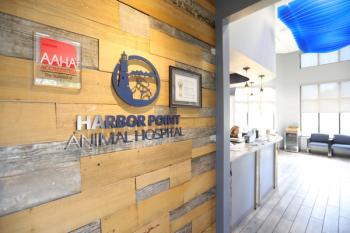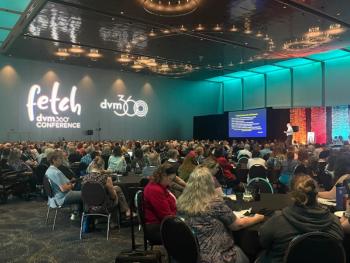
New AAHA president cites goals, challenges
Costa Mesa, Calif. - Improved communication, partnership and innovation are top priorities for Dr. Thomas Carpenter, new president of the American Animal Hospital Association.
COSTA MESA, CALIF. — Improved communication, partnership and innovation are top priorities for Dr. Thomas Carpenter, new president of the American Animal Hospital Association.
Dr. Thomas Carpenter
After more than a decade of participation with AAHA, Carpenter says he is thrilled, but also nervous, to take on the presidency. "You get ready to go forward with it, it gives you a few butterflies and you hope you can do the job some sense of justice," says the 2007 AAHA president.
Anointed at AAHA's yearly conference in Denver last month, Carpenter says his term will focus on goals developed through a collective board of directors' strategic planning meeting:
- Enhance community and connectivity with members, students and recent graduates.
- Remove management barriers to practice excellence and knowledge barriers to accreditation.
- Focus on innovation and leadership.
- Enhance public awareness of accreditation value and AAHA's role in determining excellence.
To ensure success on all fronts, AAHA already has taken action. Membership surveys are being collected to identify how veterinarians prefer to communicate and connect to others, and a practice-management advisory group is developing programs and services to teach improved management strategies and highlight the benefits of the accreditation process.
AAHA Board of Directors 2007-2008
To improve innovation, AAHA has formed a task force, acting as a think tank, to develop new ideas and processes, Carpenter says.
Partnering with professional organizations — projects Carpenter will not yet discuss publicly — is aimed at raising public awareness, in addition to public-service announcements and improved hospital communication.
"We are expanding our strategic relationships with other groups, which helps to spread education. We are in discussions with a number of veterinary organizations to do joint projects," Carpenter says. One example is the creation of pain-management guidelines with the American Association of Feline Practitioners.
The challenge
Balancing time away from his small-animal practice while reaching out to AAHA's 36,000 members and almost 3,000 accredited practices and improving camaraderie are among Carpenter's challenges for the year ahead.
"I think the biggest challenge of any national organization is the ability to reach out to your own members and make them feel like they are a part of a smaller community," Carpenter says. "How I would do that is to be out there as much as possible so I can meet people and talk with them along the road."
But Carpenter also wants to remain in touch with Newport Harbor Animal Hospital in Costa Mesa, Calif., where he has been a managing partner since 1985.
To prepare for his travel schedule, Carpenter recently hired two new doctors, bringing the practice to a total of eight. "The management team is very solid and experienced, and I'm always able to communicate with them when I'm away. Not to say it is always easy to be away, but it is such a wonderful opportunity to serve the profession," says Carpenter, whose clients also have been willing to work around his schedule.
Through experience in his own practice and AAHA, Carpenter says demonstrating the value of services and engaging in effective communication with clients are the primary issues for today's veterinarians.
"As time goes forward and the technical abilities of veterinarians grow, we need to be able to speak to the value of what we provide and make people strongly believe that when they come to us, they are getting the strongest values and service for their pets," Carpenter says. "There is a lot of pressure to step up to the plate with both communication and service."
Also anticipating animal-welfare issues to be focal in the industry, Carpenter says he encourages veterinarians to take the opportunity to be the spokespeople for these causes, conveying the profession's views to the public.
Breaking the family mold
Raised in upstate New York, Carpenter was surrounded by a cache of animal friends – dogs, cats, horses and cattle. "It was in a much different environment than now. There was no such thing as a leash law," Carpenter says.
Many relatives in the engineering field, including his father, who helped develop the first nuclear submarine, were unable to convince Carpenter to abandon his career of choice, veterinary medicine.
A lot of the reason I didn't become an engineer in a family of engineers is because I don't think that I could picture myself doing a job where I'm away from people for an extended period," says Carpenter of his experience with that profession's often secretive work. "I'm just a raging extrovert."
Married for 28 years in July, Carpenter and his wife, a bank executive, have agreed not to influence the career choices of their two sons, a college-age engineering major and a finance graduate working toward his MBA.
"But both have expressed interest in taking over my practice one day. And with their business backgrounds, I think they could do quite a job," says Carpenter, an Iowa State University graduate.
But before contemplating retirement, Carpenter is committed to set a strong example for his sons on the importance of being involved in the future of their community and profession. "As they have success and as their careers move forward, it is important for them to give back. It isn't just monetary," Carpenter says. "The giving of time is way more valuable."
Newsletter
From exam room tips to practice management insights, get trusted veterinary news delivered straight to your inbox—subscribe to dvm360.






